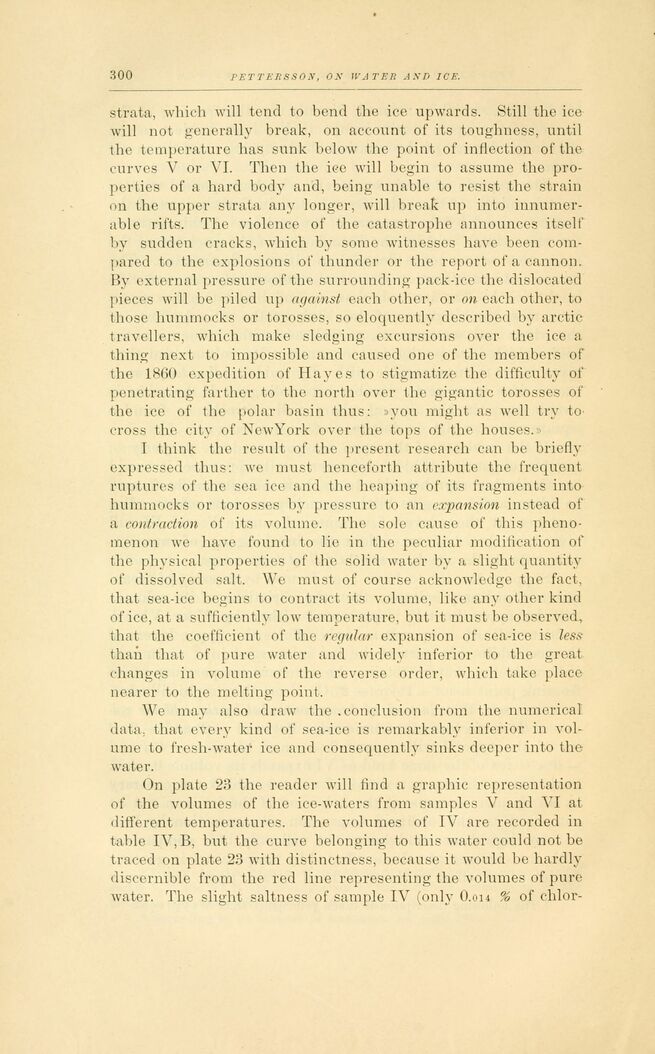
Full resolution (JPEG) - On this page / på denna sida - Sidor ...

<< prev. page << föreg. sida << >> nästa sida >> next page >>
Below is the raw OCR text
from the above scanned image.
Do you see an error? Proofread the page now!
Här nedan syns maskintolkade texten från faksimilbilden ovan.
Ser du något fel? Korrekturläs sidan nu!
This page has never been proofread. / Denna sida har aldrig korrekturlästs.
strata, which will tend to bend the ice upwards. Still the ice
will not generally break, on account of its toughness, until
the temperature has sunk below the point of inflection of the
curves V or VI. Then the iee will begin to assume the
properties of a hard body and, being unable to resist the strain
on the upper strata any longer, will break up into
innumerable rifts. The violence of the catastrophe announces itself
by sudden cracks, which by some witnesses have been
compared to the explosions of thunder or the report of a cannon.
By external pressure of the surrounding pack-ice the dislocated
pieces will be piled up against each other, or on each other, to
those hummocks or torosses, so eloquently described by arctic
travellers, which make sledging excursions over the ice a
thing next to impossible and caused one of the members of
the 1860 expedition of Hayes to stigmatize the difficulty of
penetrating farther to the north over the gigantic torosses of
the ice of the polar basin thus: »you might as well try to>
cross the city of NewYork over the tops of the houses.»
I think the result of the present research can be briefly
expressed thus: we must henceforth attribute the frequent
ruptures of the sea ice and the heaping of its fragments into
hummocks or torosses by pressure to an expansion instead of
a contraction of its volume. The sole cause of this
phenomenon we have found to lie in the peculiar modification of
the physical properties of the solid water by a slight quantity
of dissolved salt. We must of course acknowledge the fact,
that sea-ice begins to contract its volume, like any other kind
of ice, at a sufficiently low temperature, but it must be observed,
that the coefficient of the regular expansion of sea-ice is less
than that of pure water and widely inferior to the great
changes in volume of the reverse order, which take place
nearer to the melting point.
We may also draw the .conclusion from the numerical
data, that every kind of sea-ice is remarkably inferior in
volume to fresh-water ice and consequently sinks deeper into the
water.
On plate 23 the reader will find a graphic representation
of the volumes of the iee-waters from samples V and VI at
different temperatures. The volumes of IV are recorded in
table IV, B, but the curve belonging to this water could not be
traced on plate 23 with distinctness, because it would be hardly
discernible from the red line representing the volumes of pure
water. The slight saltness of sample IV (only O.014 % of chlor-
<< prev. page << föreg. sida << >> nästa sida >> next page >>